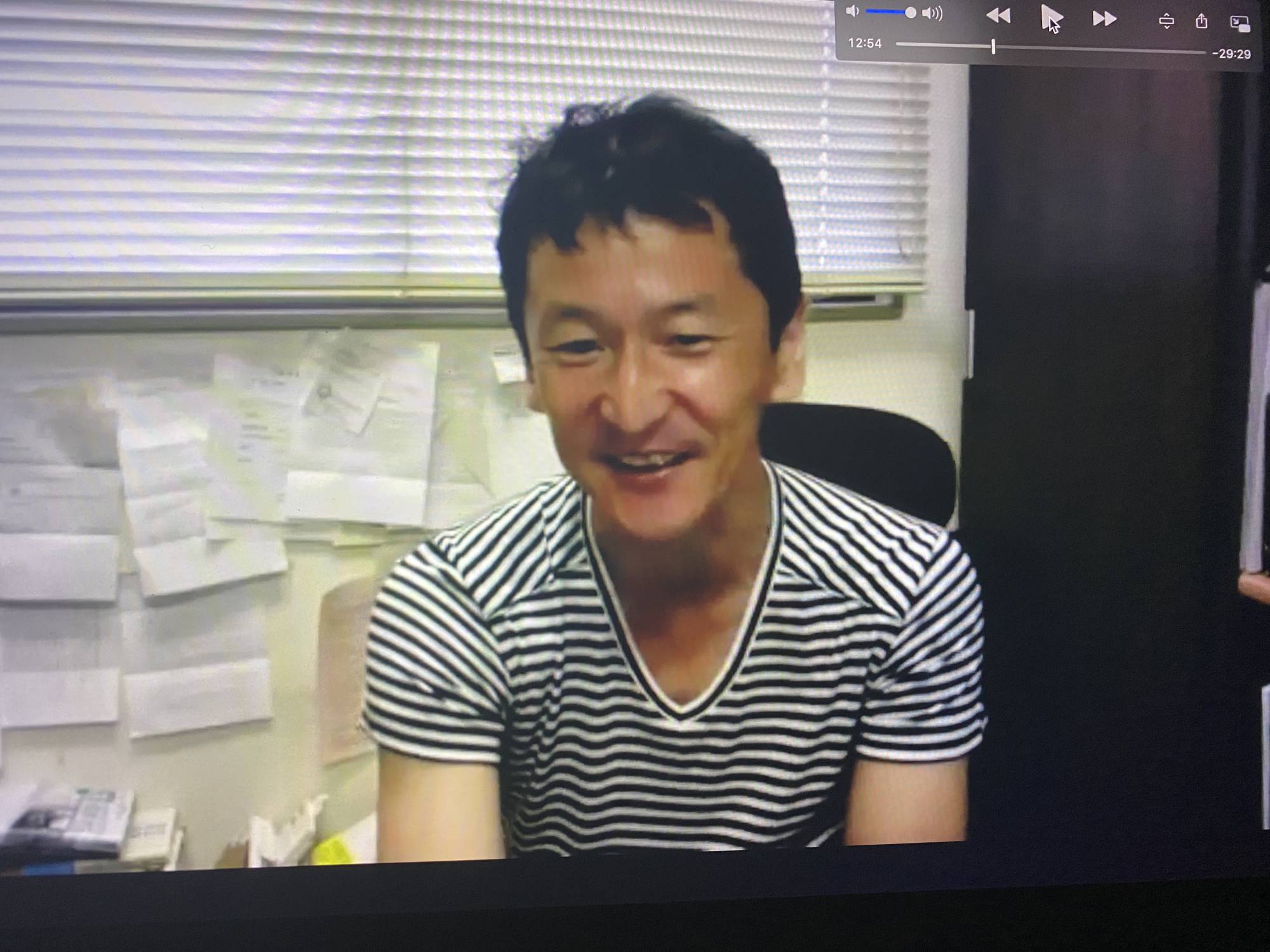While the sports world has attempted to prevent infections of COVID-19 and reduce its spread, some have raised concerns over the potential long-term consequences for athletes who have already been infected.
The virus has hit a number of star athletes. In Japan alone, Shintaro Fujinami of the Hanshin Tigers, Hayato Sakamoto of the Yomiuri Giants and Gotoku Sakai of the J. League’s Vissel Kobe are among those who have tested positive.
Australian Mitch Langerak, a goalkeeper for Nagoya Grampus, became one of the J. League’s first positive cases in early June. Fortunately he was asymptomatic and subsequently returned to the pitch when the league’s top flight resumed its season on July 4.
“For me, it was a bit of a shock ... it was a major shock,” Langerak told the Japan Times last month. “(But) I didn’t feel anything. I didn’t feel any different. But I guess I’m part of the exceptions, not the rule. I was very lucky.
“As soon as I got out — I tested negative twice, so I was OK to leave the hospital — I was straight into training and within two days I was feeling strong and feeling back into it.”
But in actuality, Langerak’s experience is common among athletes in Japan who have tested positive for COVID-19, leaving some local medical officials optimistic about a lower risk of long-term effects. Yet the potential threat of reduced respiratory or pulmonary function looms large for those whose careers rely on being able to physically compete at the highest level.
Kentaro Iwata, professor of infectious disease at Kobe University, believes that athletes do not have to worry about whether the virus could severely affect their athletic performances after recovery.
“It’s evident if you look at the data: Athletes have been infected around the world, but the virus has barely caused any impact (on their post-recovery performances),” Iwata said. “In most cases, regardless of the sport, symptoms are mild and athletes recover naturally and return to their competitions. From the medical standpoint, there isn't much to be afraid of as far as athlete infections are concerned.”
Iwata even described the virus as “nearly harmless for healthy, young people,” which can be used to describe most professional-level athletes, too.
Because the disease presents symptoms when the virus reaches a person’s respiratory tract, it poses a possible risk to an athlete’s performance if their lungs are damaged as a result.
Iwata did not exclude the possibility, but described it as unlikely and said most people would face few or no symptoms during their recovery.
“Vissel Kobe’s Gotoku Sakai has been infected with it,” said Iwata, who is a fan of the Kansai-based soccer team. “But after he received medical treatment and recovered, he’s been running around at his highest level possible, playing twice a week or so.
“There aren’t almost any problems with cardiopulmonary functions — that’s how it’s viewed generally. I’m not going to deny that (a problem) could happen, though.”

Haruo Nakayama, a neurosurgeon and an infectious disease specialist for Toho University, did not rule out the possibility that the virus could affect respiratory systems long-term, even though currently available evidence is not yet conclusive.
“The effect of the virus on respiratory systems after patients no longer need to be hospitalized has not been scientifically examined,” Nakayama said. “But when we observe the pictures of those infected and the symptoms that they claim after they are discharged, some of them have claimed to be physically worn out for a while, or it gets harder for them to exert themselves more than usual.
“That’s not just older people, but there are some in their 20s and 30s claiming the same things.”
Nakayama explained that the coronavirus could cause fibrosis in the lungs, causing the organs to lose flexibility.
“If the lungs lose their flexibility, it could affect the cardiopulmonary functions of athletes and I would say the chance of that happening is not zero,” he said.
Underlying medical conditions such as Type-1 diabetes, heart failure and respiratory disease can exacerbate the symptoms of the virus. Referring to Hanshin pitcher Minoru Iwata and Vissel’s Sergi Samper, who both are diabetic, Kentaro Iwata stated that high-risk patients, including those undergoing dialysis or using immunosuppressants or cariostatic drugs could be at risk for more severe symptoms.
To that end, Iwata criticized the participation of swimmer Rikako Ikee, who is recovering from leukemia, in a July event marking one year before the postponed Olympics at the National Stadium.
“She had leukemia and (hematopoietic stem cell transplantation) and must have had so many immunosuppressive drugs, which made her weaker to infectious diseases, not just to the coronavirus,” Iwata said. “I’m very angry with the people that brought her out to say something like ‘Let’s hope to have a (successful) Olympics next year.’ I think that’s cruel.”
While Iwata draws a positive image of athletes’ post-infection performances, team medical staff working directly with athletes — as well as overseas medical officials who have dealt with higher numbers of severe cases — have stronger concerns over potential long-term implications.
Nobuhisa Yoshida, a sports science and performance director for the B. League’s Sunrockers Shibuya, said that athletes with more severe symptoms, if hospitalized for two to three weeks and quarantined further upon release, could require more time to return to their peak condition after experiencing decreases in activity levels and cardiopulmonary functions.
“And if (their time away from training) gets longer, it could cause a decline in the volume of muscle and muscle strength as well as slower reflexes,” said Yoshida, who previously worked as an athletic performance assistant for the NBA’s San Antonio Spurs.
The level of effects from the coronavirus could vary depending on athletes’ situations as well — physical conditions can differ greatly depending on whether they are in or out of season.
“If an athlete gets infected during the season, their fatigue level is higher,” Yoshida said. “So you (as a medical staffer) try to develop the athlete’s physical condition steadily. If you can check the degree of the athlete’s physical decline based on data, you can check their readiness and make sure to bring it to where he can finally play, then give him a green light.”
Overseas, an increase in residual damage to coronavirus patients’ hearts and lungs have spurred studies on the virus’s potential long-term consequences.
John Swartzberg, a clinical professor emeritus of infectious diseases and vaccinology at the University of California, Berkeley, told the school’s news portal in July that the virus “seems to accelerate a great deal of scarring in the lungs.”
Swartzberg also said that COVID-19 can directly attack heart muscle cells, and that the cytokine storm — an excessive release of molecules that trigger an inflammatory response by the body — caused by the coronavirus can hurt the heart as well as the lungs. He stated that there is evidence both for and against long-term damage.
“We don’t know what the long-term effects of that may be,” Swartzberg said. “But it could be that we will have a population of people who survive COVID-19 only to go on and have chronic cardiac problems.”
Swartzberg referred to the central nervous system and the kidneys as other organs that could potentially be damaged by the virus.
Myocarditis — inflammation of the heart muscle — has been linked to the coronavirus in reports in the United States and Europe.
Some athletes in the U.S. and Europe have reported persistent and residual symptoms, such as coughs, tachycardia and fatigue, many weeks to months after initial coronavirus infections.
These potential post-COVID-19 effects do not seem to have been discussed widely in Japan, where the focus has been on the number of infections and the death toll. In the U.S. and Europe, officials have debated the necessities of pathways for athletes to return to intensive practices and competitions, including heart and lung screenings.
Nakayama admitted that the lack of such discussion within the Japanese sports community was in part due to a lack of sufficient evidence.
But Nakayama — who serves as the executive adviser of the B. League’s anti-coronavirus team — said that the group has internally discussed the potential damage athletes face, although it has not been able to specify them in the league’s guidelines.
He said that if two-thirds of an infected athlete’s lungs are damaged when they are hospitalized, it can easily be inferred that their performance post-recovery will be infected.
“And whether the athlete’s performance would get back to normal after working on rehab and all that, half a year or nine months later? That’s something we are going to find out later,” Nakayama said. “We don’t know yet.”
Staff writer Dan Orlowitz contributed to this story.















With your current subscription plan you can comment on stories. However, before writing your first comment, please create a display name in the Profile section of your subscriber account page.